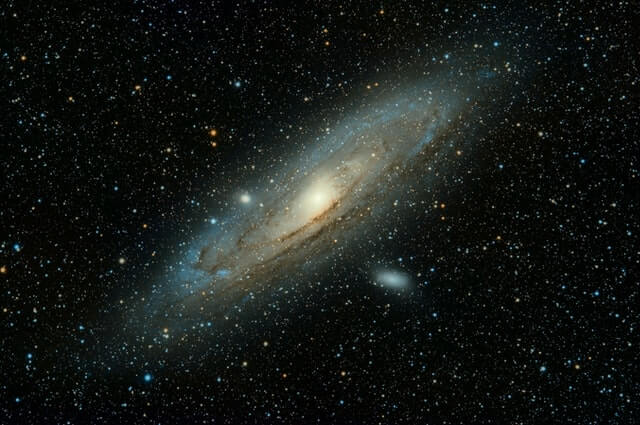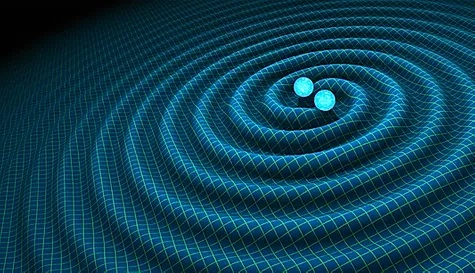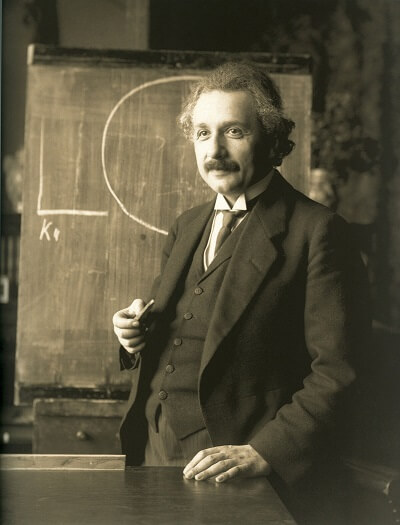What is Einsteinian Physics?
Evidence of the existence of photons led to quantum theory, and evidence that space can curve confirmed Einstein’s general theory of relativity (which includes the earlier special theory of relativity). It unleashed the technological revolution that underpins modern civilisation, forming the basis for computers, mobile phones and GPS, etc.
Einstein was awarded a Nobel prize for his contribution to physics and developed the world’s most famous equation E=mc2
Many concepts of classical physics only provide rough approximations and can not fully explain the quantum world or the nature of time and space. Physics in the school curriculum does not provide a full explanation of the science of our universe – the Einstein-First Project is working to update this.

What is Light?
In 1887, Heinrich Hertz successfully sent invisible energy across a table in his laboratory. This energy, called electromagnetic energy, was understood to be travelling through space in the shape of a wave. In 1888, Heinrich Hertz discovered that this energy caused a single electron to be removed from a piece of metal and therefore create electricity.
In 1918, Albert Einstein explained that this phenomenon was due to the energy being emitted as a stream of particles – not a wave like everybody originally thought. The discovery of this particle, called a photon, has shown that light and all energy on the electromagnetic spectrum travel as individual particles yet have wave-like properties which include frequency, interference and wavelength.
What is Space?
Space is a 3 dimensional fabric, everything moves in space and fills empty space – things move freely through space. There is space between planets, space between people and space between atoms. This space does not always remain stationary – space can stretch, squeeze and ripple. Space curves around objects with mass – the greater the mass of an object, the more the space around it will curve.
Matter and space are linked by the concept of movement, or inertia.


What is Time?
Time is the forward progression of everything around us, we each have our own biological clock – time can move at a different rate in different parts of the universe. When space is stretched or squeezed, time is also affected! The heavier the mass, the more space is curved and time passes by slower!
When we move upwards we are not only fighting against gravity, but also time. The centre of the Earth is a few years younger than the surface.
What is Space-Time?
We can describe anything by not only its location in space, but also in time. We can combine space and time to form a 4-dimensional fabric known as space-time.
Matter tells space-time how to curve, space-time tells matter how to move.

What is Gravity?
Time and space curve around masses – this curvature of time and space is gravity. Gravity is the result of the fabric of space-time being distorted in the presence of mass.
In 1916, Albert Einstein predicted the existence of gravitational waves – these waves are ripples in the fabric of space-time in which everything in its path stretches and squeezes. In 2015, 1000 physicists across the world detected these waves for the first time when two black holes collided approximately 130 light years away.
What is 1+1
Can it equal 1? Can it equal 0?
The speed of light is the fastest known speed to exist, which would mean that if you shine a torch forwards whilst you are also travelling at close to the speed of light – your torchlight will only be travelling at the speed of light! This would mean that 1 + 1 = 1
Photons create interference – similar to waves; during light interference, patterns occur that show light and dark patterns – the photons are interfering and cancelling each other out. This would mean that 1 + 1 = 0
Have some questions?
Get in touch with the team.

